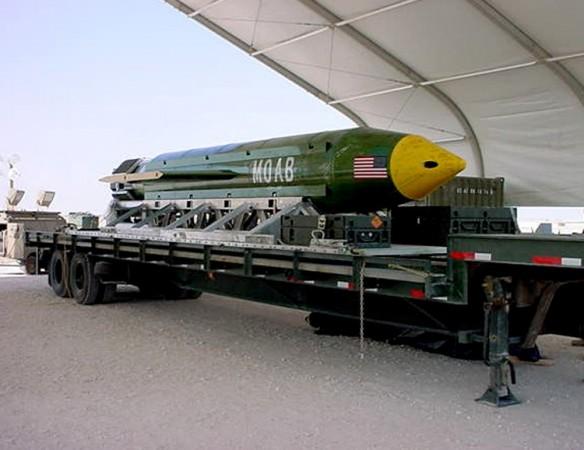
The United States on Thursday dropped the largest non-nuclear bomb on a section of the leadership of the Islamic State group in Afghanistan. The attack came just over a week after ISIS called US President Donald Trump an "idiot" in an audio message.
The attack has led to the death of 36 ISIS members, according to sources. At least one of them is believed to have been recruited from Kerala.
Here are 10 things to know about the bomb that was dropped, who the target was and what their connection to India is. And, why this was the "mother of all bombs".
1. The US, at "around 7 pm local time in Afghanistan" on the night of Thursday, dropped a "large, powerful and accurately delivered weapon" called the GBU-43.
2. According to a White House press statement, the target was "a system of tunnels and caves that ISIS fighters used to move around freely, making it easier for them to target US military advisors and Afghan forces in the area."
3. The location of the attack was in the Achin district of the Nagarhar province of Afghanistan.
4. The US also said it took all precautions necessary to prevent civilian casualties and collateral damage as a result of the operation.
5. The GBU-43 is classified as a Massive Ordnance Air Blast Bomb (MOAB). It was dropped from an MC-130 aircraft.
6. It is the largest non-nuclear bomb in the world. The GBU-43 is called the "mother of all bombs" because of this, and also because the acronym matches with the original MOAB.
7. The MOAB weighs 21,600 pounds (about 9,800 kg) and uses a GPS-based guidance system.
Watch a video of the GBU-43 in action here:
For the first time in history a GBU-43/B Massive Ordnance Air Blast bomb was used. The #MOAB was used on an ISIS-K tunnel in Afghanistan. pic.twitter.com/zI9d2CXOfa
— U.S. Air Force (@usairforce) April 13, 2017
8. But why the MOAB? US Forces commander General John W Nicholson has been quoted as saying in a statement from the US forces' headquarters in Afghanistan: "As ISIS-K's losses have mounted, they are using IEDs [improvised explosive devices], bunkers and tunnels to thicken their defence. This is the right munition to reduce these obstacles and maintain the momentum of our offensive against ISIS-K."
9. The ISIS-K being talked about is the ISIS-Khorasan Province — a branch of ISIS that is active in Afghanistan and Pakistan. ISIS is also known as the Islamic State of Iraq and Syria (ISIS) or the Islamic State of Iraq and the Levant (ISIL).
10. This is the same branch of ISIS whose operatives had in March this year tried to blow up a train in India, but were apprehended. The incident had led to a strengthening of security and intelligence in India, because it confirmed the presence of ISIS modules in the country, which had already been targeted by several other terrorist groups that are either aided by Pakistan or use that country as a refuge.

















